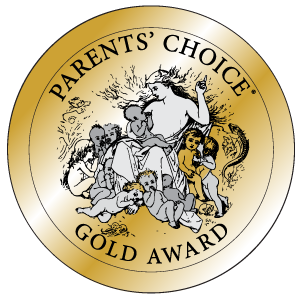The history of ancient India is shrouded in mystery. It wasn’t until archaeological discoveries in the 20th century found evidence of people inhabiting sites across India dating back to the Paleolithic era!
What Did the Archaeologists Discover in India?

They found stone tools and pictographs in caves along the Ravi and Indus rivers. The Ravi river borders India and Pakistan, and flows into the Indus river. (Pictographs are paintings known to be the earliest form of writing and are composed of pictures or symbols instead of words and phrases.)
This area is now believed to be the cradle of civilization for India.

The tools and pictographs were dated to pre-historic times.
Once the scientists started to dig, they began to find all sorts of interesting things! They uncovered cities made of fired brick and large aquifers, believed to have been used for ritual bathing, plus pottery and bronze tools.
All the stuff they’ve found and the cities they’ve uncovered was attributed to a civilization called the Harappan or Indus civilization, named after the Indus River.
The archaeologists are still finding more and more, giving them clues to how these people lived. The biggest mystery is they haven’t been able to decipher the writings they’ve found for the Harappan!
From dating the artifacts, it’s believed their empire lasted for over 1,000 years.

Where Did the Harappan Peoples Go?
Some historians think that the people began to leave the cities following floods, earthquakes, and droughts that plagued that area around 1,500 BC.
Others think that tribes from Central Asia and the area that’s now Afghanistan began to invade. These tribes of people were known as Aryans.
What historians do know about this period of India’s past is this is when Sanskrit writing appeared, and they can decode that writing. Literature, such as the Hindu sacred scriptures, the Vedas, were written at this time.
It was also during this time that the caste system became a part of everyday life in India.
What Was the Caste System?
The caste system in India separated people into classes. The classes were called varna or jati originally, and broke people into different groups based on their birth.
The term varna translates to type, order, color, or class. Jati is a term found in almost all Indian languages and relates to a person’s lineage or kinship.
Caste actually comes from a Portuguese word casta. Its meaning is much like jati. Why a Portuguese word? We'll find out in just a bit!
There are four main groups which people were separated into. The Brahmins, or priests, the Rajanyas, or rulers and warriors, the Vaishyas, who were merchants, artisans, and farmers, and the Shudras. They were laborers.
There is another group in the caste system. Made up of tribal people and those who are called outcasts. The Dalit, or untouchables, perform the lowest work.
It’s been a part of their society, and based in Hindu law, dating back to at least 1,000 BC.
Basically, if your family were farmers, then you’d be a farmer. If your family ran a little shop, you would run the shop when you got old enough. You became what you were born into. The people didn’t have any choice to be or do something different.
It was, and sometimes still is, a tough system. People are working on making it better, though. Something that’s been a part of a culture for so long takes time to change.
Exploration and Colonization
When sailors from Europe began to sail south around Africa, they ended up on the shores of India. Many European traders and settlers began to colonize the area, and some of their words, like casta, became a part of the language.
Several countries set up trading companies, such as the British East India Trading Company, and began to take control of the Indian people. Britain ruled over parts of India for nearly 400 years! Many of the native peoples were not happy with the rule and fought for independence.
After World War II, in 1947, the nation became independent from British rule.
Interesting Facts About India
India is home to 65,000 species of animals! It’s one of the only places on Earth where both lions and tigers live.

With a diverse landscape from the tallest mountain range- the Himalayas, to deserts and jungles, it’s also home to some of the rarest animals, like the snow leopard.

Animals are sacred in the Hindu religion, and the most sacred is the cow. Cows wander the streets and have even been known to cause traffic jams!
It might have something to do with their beliefs, but India has the highest population of vegetarians.
Speaking of population…India has the second largest in the whole world. Second only to China, there are over 1.3 billion people who live there! For a little comparison, the population of the United States is only about 330 million.
Festivals of India
India has lots of holidays. There are over 26 official holidays and festivals celebrated during the year, which uses both a solar calendar and a luni-solar calendar using the moon.
And since the large population comes from many diverse cultural groups, India gets to celebrate a lot!
Among the big holidays are Holi, Eid al-Fitr, Diwali, and Christmas.

They also celebrate their Independence Day on August 15th. India officially became its own country in 1947 when it declared independence from Britain.
One of the largest festivals on Earth is the Kumbh Mela. While it’s recognized annually, the major events take place in cycles. Every four years people make pilgrimages to a different river bank- the Prayagraj, Haridwar, Nashik, and Ujjain. The festival is so huge that it can be seen from space!
We're Here For The Food of India!
Then there’s India food… Yum! Indian food is found all over the globe. Highly spiced, full of flavor, and gaining popularity everywhere, it’s one of the most widespread cuisines around.
Britain even claims tikka masala as a national dish!

With tasty dishes like Tikka Masala, Tandoori Chicken, Curries, and Naan bread to scoop it all up, no wonder Indian foods are so popular.
India is a pretty interesting place filled with all kinds of amazing things! One more place to explore and learn all about on this great, big planet.
You can learn more about the history, geography, literature, culture, art, and music of this amazing country with our India box from eat2explore!
Want To Make Your Own Naan Bread?
Here's an easy recipe you can try!
Ingredients
- 1/2 cup warm water
- 2 tsp instant yeast (you can use active yeast; the dough will just take a little longer to rise)
- 1 tsp sugar or honey
- 3 Tbsp extra virgin olive oil
- 1/4 cup plain yogurt
- 1 egg, beaten
- 1/2 tsp salt
- 2 1/2 - 3 cups all purpose flour
- extra olive oil or butter to grease the rising bowl
- melted butter for brushing the warm naan
Instructions
-
Add yeast to warm water and add sugar. Stir it up and let sit for five minutes or till bubbly.
-
Add olive oil, yogurt, egg, salt and 2 cups of the flour. Stir until well combined and not lumpy.
-
Add enough flour to make a soft dough. You may not need all 3 cups of the flour.
-
Now for the fun part! Place the dough on a floured counter and knead a few times. You only need to knead the dough until it is smooth and not sticky.
-
Spread some extra olive oil or a bit of butter around in a big bowl.
-
Place the kneaded dough in the bowl. Cover with a dish towel and let rise in a warm place until it's twice as big, or doubled.
-
Preheat a skillet to medium heat. Time to fry the naan!
-
Cut the dough into eight pieces. On a floured surface, roll out each piece into a 6" circle.
-
Add a little oil or non-stick spray to the skillet. Cook each circle for 2-3 minutes or until bubbly and golden brown on the bottom. Flip over and cook for another 2-3 minutes.
-
Brush the top of each naan with melted butter. Enjoy with your yummy Indian feast!
Check out more recipes from India at eat2explore!





